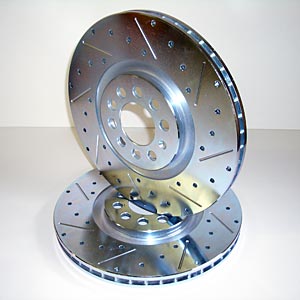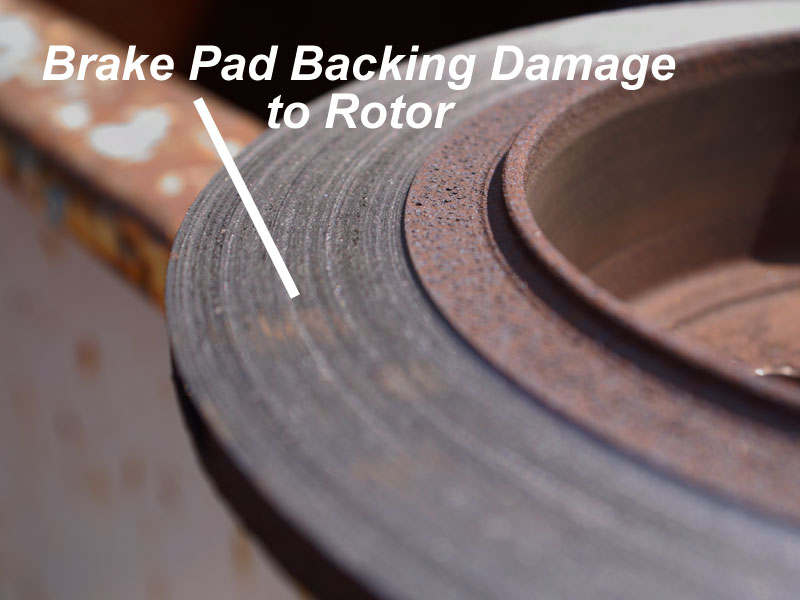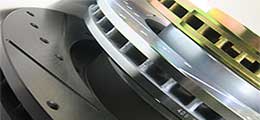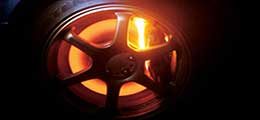
This question is asked by many, and there is no simple answer to the question. There are a few different reasons that a brake rotor would need to be adjusted or replaced, but not one that applies to all situations. In a lot of cases, you may not even have to replace a brake rotor as they could simply be resurfaced back to factory specifications using special equipment.
What we are going to do with this article is explain to you a few different circumstances when brake rotors need to be replaced and also situations where brake rotor repair is not recommended.
There is a whole list of things that can damage a brake rotor or make it seem as so.
Normally when your brake rotor is damaged, you will experience symptoms that you can notice when driving. These things involve poorer braking performance such as push back from the brake pedal or shaking of the steering wheel when applying your brakes and even noise.
We have compiled a list of things that can either cause a brake rotor to become damaged or cause it to malperform:
Brake Pad Debris- When a brake pad is heavily used as in performance or high braking applications, little pieces of debris can break clear of the pad and leave deposits behind on the brake rotor. This brake pad debris can cause what seems like an uneven or warped brake rotor, but in reality is only creating a wedge between the pad and rotor itself.
One way you can rid yourself of this problem is to stomp on your brakes a time or two to clear the rotor by scraping it off. If this method of cleaning your rotors doesn’t work, then it’s time to remove your tire to get at the rotor itself for some cleaning. This problem is rare, but is always a possibility.
Uneven Lug Nut Torque- When you do not tighten your lug nuts in a proper star configuration, you can cause your rim to have uneven lug nut torque. This uneven lug nut torque can cause what seems like a permanently damaged rotor with an uneven braking pattern. To fix this problem, you should simply remove all your lug nuts and retighten them in proper order with adequate minimum torque levels.
Heat Warping- Excessive use of your brakes on standard issued brake rotors can cause heat build up on the rotors to a level that exceeds what the caliper can take. When this critical threshold of heat buildup is crossed, and there is no other place on the rotors to disperse the heat, brake fade will occur. Brake fade is the loss of brake effectiveness.
Excessively Worn Brake Pads- Brake pads that are used past their recommended usage levels will damage rotors. The screws that hold the brake pad together will begin to grind on the brake rotors during braking and over time grind a groove into the rotor. You will most certainly hear a grinding noise when this is happening in addition to the screech from the brake pad wear indicator.
If you have determined that your brake rotors need servicing, then you will have to decide whether to have them resurfaced or replaced with new ones. One factor that goes into deciding this is whether or not the rotor has the thickness left to allow a resurface of the rotor to happen. Resurfacing is possible anytime the brake rotor has a thickness that exceeds the manufacturer’s minimum thickness levels.
You can often find this minimum thickness number stamped on the side or back of the brake rotor, but if not, you can look up these numbers by checking with your brake rotors part manufacturer or even the brake rotor distributor. Additionally, part service guides can also give you these numbers if your using a standard brake rotor that came with your vehicle.

You can measure your brake rotors thickness with a pinch micrometer. If you find that your rotor is below the manufacturers recommended minimum thickness level, DO NOT attempt to resurface the brake rotor. In the case that the brake rotor doesn’t currently meet spec, you should be purchasing new brake rotors.
If you see that your rotor still has enough metal on it left for a resurfacing job, you then must decide if the damage on the rotor can truly be fixed by resurfacing.
Mechanics typically only resurface brake rotors if there are minor scratches or gouges - not when the rotor has significant damage.
After resurfacing the rotor, you will be able to tell if the rotor is back to spec levels safe for driving using runout measurements. Runout is the distance between the minium and maxumum thickness levels that exsist on the rotor braking surface. By using your pinch micrometer, you can check the thickness of the rotor in multiple locations. The total differnce in thickness of your rotor surface should be between .002" - .005".
If your brake rotor became warped because of extensive heavy braking, then it is probably a good time to purchase a high performance brake rotor set for use. The selection of brake rotors we have for sale on our website is quite extensive and does include slotted and drilled designs made specifically for high brake usage capacity.








newgen32
posted on Jan 10, 2012 1:17:25 PM